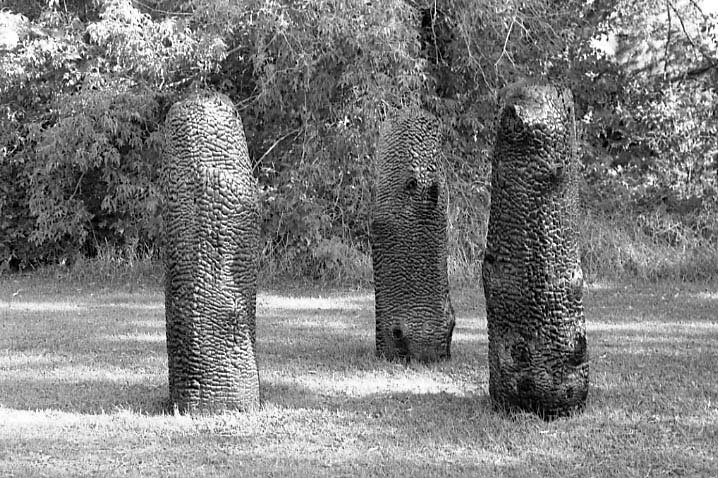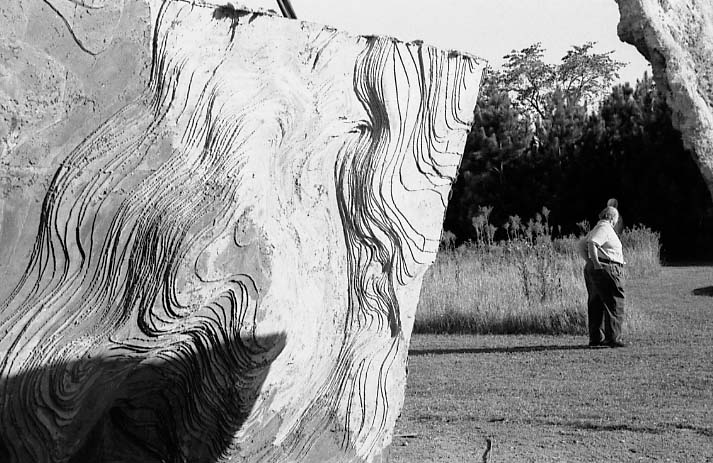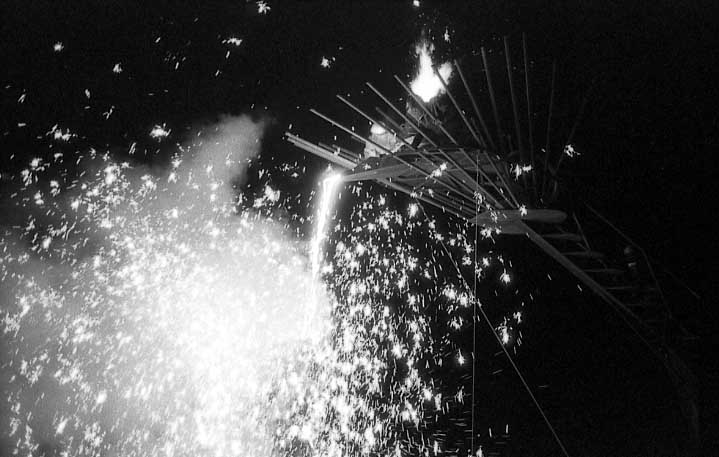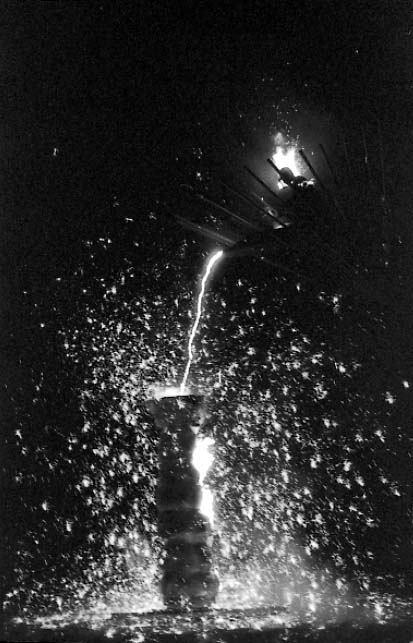Photoessay: Franconia, End of Summer
Last Saturday, Glenn Gordon went to the party that Franconia Sculpture Park throws every year to celebrate the summer's production of new work. He took these photos and wrote these words. As always, click on images to enlarge.






Once a year on a Saturday in the middle of September, Franconia Sculpture Park throws a party. It goes on all day and on into the night, celebrating the park’s new sculpture and the artists who’ve made it. There are performances of music, dance, poetry, and puppet shows, and a dramatic iron pour and bonfire at the end. People stream in from all over, many with their kids, to wander and cavort amid the seventy-five or so sculptures sited over the old farmstead’s sixteen acres of grass and mown paths.
Franconia is a big shaggy outdoor laboratory for unfettered sculptural experiment, a place where young sculptors get to work bigger than they ever have before, and older sculptors take chances outside the confines of their studios. When museums feel stuffy and too much like going to church, a visit to Franconia can clear your head. For sculptors, the place is not about the solemn production of masterpieces but about the freedom to play and see what happens, to work your ass off outdoors and get sunburned and bitten by bugs all summer and not mind it. It runs on exuberance, fueled more than anything else by a one-man Niagara and fireball of energy, Franconia’s artistic director, John Hock (himself a sculptor, who welds titanic compositions out of the giant barrels of cement trucks).
Most of the time, sculpture stands isolated in silence, often with no people anywhere in sight, and that’s often the way it’s photographed, as though the world were depopulated and these are its ruins. Last Saturday, people wove themselves into and around the works at Franconia; the interplay made everything that much more interesting to drift through with a camera. Here’s a little of what there was to see.
Purification, by Thomas Matsuda
There are no people in this photograph, but the scorched trunks exerted an almost human presence. Powerful things to be near, they are not like the stumps left after a forest fire, but are like classical sculpture of the human figure, down to the rendering of drapery. The sculptor, who studied for ten years in Japan and is also a carver of Buddhas, controlled the burning and deep charring of the surfaces with finesse, using off-cuts from a local sawmill, i.e., sacrificing pieces of other trees, as fuel.
Physical Tension, by Megan Madland
The parts are each about seven feet square, facing and slightly inclined toward each other. The stepped protruding or receding contours of one panel don’t exactly delineate the opposite positive or negative space of the one across the way but if you step between the two you can sense a kind of conversation of push and pull coursing back and forth, and the same phenomenon playing itself out in the figure in the distance.
The Rise of the Vulcanites, by Matt Toole
Three views of the dramatic nocturnal iron pour culminating a three-year project by Matt Toole. Described as “a pyromaniacal performance sculpture,” “The Rise of the Vulcanites III” was accompanied by a throbbing sonic undertow of people whanging a large empty steel oil storage tank. Toole had fabricated a three-story-high staircase that vaults out of the ground at about a 45º angle, terminating in a parapet whose spikes evoke the crown on the Statue of Liberty. Helpers struggled up the stairs with buckets of scrap iron to be smelted in a furnace at the lip of the parapet, where a spout poured a cataract of molten iron into the funnel atop a vertical form standing below. The form, with a core of solid styrofoam surrounded by crates packed with straw and wrapped in plastic shrink wrap, was designed to flame and spark and billow smoke extravagantly, which it did. The first photo shows Allen Peterson breathing fire just before the pour; the second is the beginning of the pour; the third shows the molten cataract and the bulging form afire.
Editor’s Note:
Franconia, like almost all arts organizations in this time that puts war and domination above peace and creativity, is needing the help of all those who love it and wish it well. The balance of anarchy and discipline that it sustains; the yield of brave experiments and beautiful results; the freedom that it creates like a factory creates widgets—these have changed the face of the arts in Minnesota. If you wish to sustain this ongoing practice of sanity, send your pocket change, checks, or bond dividends to: Franconia Sculpture Park, 29815 Unity Avenue, Shafer, MN 55074. To view the Park, take Highway 35 to Highway 8 (exit just after the main Forest Lake exit); Franconia is on the right about 3 miles before Taylor’s Falls. Open 365 days a year, dawn to dusk.
–AK